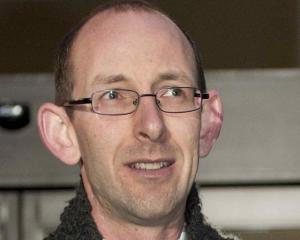A retired Belfast-trained forensic pathologist involved in almost 10,000 postmortem examinations, about 800 of them in gunshot cases, yesterday said there was "no chance" Laniet Bain would have survived a bullet wound to the top of her head.
The most significant element about that wound and another to the left side of her head was that each caused "almost complete destruction" to vital centres of the brain, James Ferris, Emeritus Professor in Forensic Pathology at the University of British Columbia and an Auckland resident since 2005, told the David Bain retrial in Christchurch.
Like other pathologists called by the Crown in the retrial of 37-year-old David Cullen Bain for the murder of his father, mother, two sisters and younger brother, Prof Ferris was of the view 18-year-old Laniet was first shot in the left cheek, probably lost consciousness for a time, but was still breathing and able to move and would have survived the initial wound.
He could not say whether the shot to the top of the head came before or after the one to the left side of the head, but there was "no chance of survival" after those shots, Prof Ferris said.
He told the court he had been specifically asked by the deputy Solicitor-general in 2002 to look at pathology questions concerning the deaths of Robin Bain and Laniet.
He was also asked to give an opinion about the order of the deaths, having several years earlier been involved in research into the times of death.
That project had ended in 1999 "with no definitive conclusion" after three years of study and research.
Time of death was a matter on which pathologists "shouldn't speak with any authority".
There was "no reliable scientific method of determining" it, Prof Ferris said.
His evidence came on the sixth week of David Bain's second trial for the murder of his family at their Every St home in Dunedin on June 20, 1994.
Bain denies killing his 58-year-old father Robin, mother Margaret (50), sisters Arawa (19) and Laniet (18) and 14-year-old brother Stephen.
The Crown contention is that Bain shot four of the family before going out on his paper round, then returned and waited until his father came in to the front lounge and shot him from the curtained-off computer alcove, placing the rifle on the ground near him to make his death look like suicide.
But the defence says Robin Bain shot his wife and three of his children while suffering from depression and being aware he was about to be unmasked as the incestuous abuser of Laniet and that he then committed suicide.
The trial is expected to take about another six weeks.
The principal matter Prof Ferris said he was asked to consider relating to Laniet was the effect of the wound to her left cheek, whether it was a rapidly fatal wound or whether she would have been able to keep breathing.
The sequence of the shots is an important issue in the case as David Bain said he heard Laniet gurgling, which meant she must have still been alive.
Prof Ferris said the wound to the cheek might have caused some minor damage to the base of the skull but had not entered the skull cavity or caused brain damage.
That was borne out by pathologist Alexander Dempster's description of blood in the air passages and right down deep in her lungs.
It showed Laniet had survived the wound to the cheek for long enough to inhale blood into her lungs, Prof Ferris said.
The wound had not interfered with her breathing, although it was unknown if she would have been conscious.
While the shock wave of the bullet could cause a loss of consciousness, Laniet would have been able to breathe.
But two other shots, whatever order they were fired in, would each have resulted in almost complete destruction of the centres in the brain responsible for maintaining life function.
The blood on Laniet's hands indi-cated contact with a surface that was bleeding and the pattern of blood on the pillow suggested movement of the upper body after the first shot.
The "gurgling" sound heard by David Bain would have resulted from Laniet's attempts to breathe through the blood in her airways.
If she was still alive, she would certainly be capable of making those noises.
And if she was dead, there would be no noise of air passing through blood unless the body was actually moved.
As to whether Robin Bain's wound was a self-inflicted wound, Prof Ferris said it was a relatively cleanly punched-out bullet hole and the angle of the wound seemed to suggest almost vertical contact with the skin.
A small amount of black marking around the bullet hole was typical of what was known as "bullet wipe" where the bullet "cleaned itself" as it penetrated a surface.
The most significant element was the powder marking, tattooing or stippling where skin had been broken.
There were several quite definitive abrasions and a largish red spot which might be a powder mark or blood.
The presence of powder indicated that, by definition, it was an intermediate wound, Prof Ferris said.
The minimum distance would be 10cm plus, but it would be unusual to see that degree of "scatter" as close as 10cm.
He told the court the wound to Laniet's face was "completely different" from the wound to Robin.
Even if there were only two powder marks, the wound would be classified as intermediate.
"Effectively, once you've identified powder marks, the fewer the marks, the greater the range," Prof Ferris said.
He will continue his evidence today.





